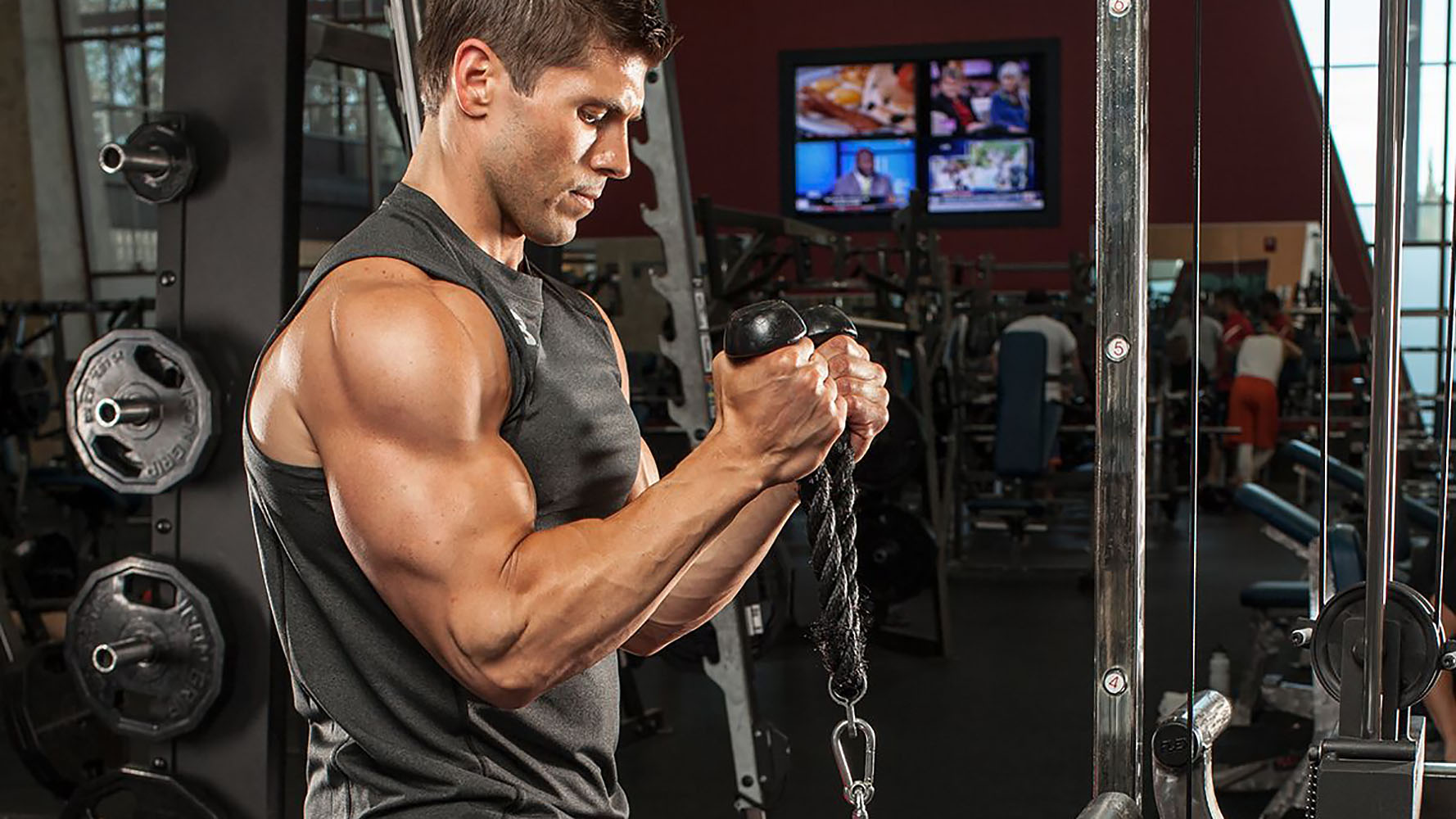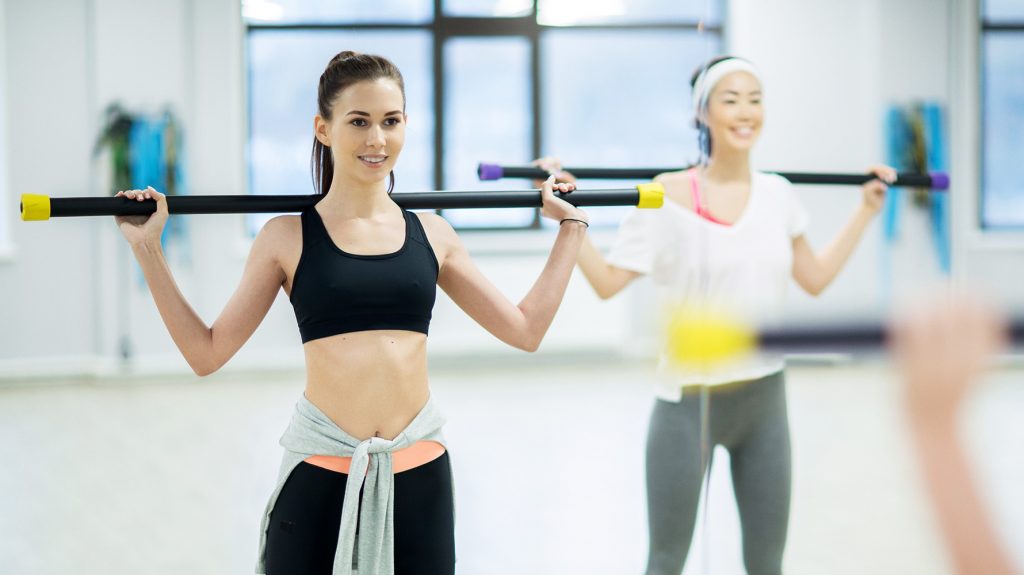Standing Bicep Cable Curls are considered a basic and safer alternative to lifting a barbell. This exercise is great for both beginners and professional athletes. It allows you to provide a powerful load and stretch on the short head of the biceps, visually expanding the volume of the arm.
What Muscles Do Standing Bicep Cable Curls Work On?
Bicep Cable Curls refers to exercises of the isolating type, as only one pair of joints (the elbows) are involved in the work.
When performed this exercise correctly, the main load falls on the:
- Biceps (predominantly short head);
- Shoulder muscles;
- Brachioradialis.
If the athlete feels tension in other muscles (for example: triceps or trapezius) when performing The Standing Bicep Cable Curls, this indicates an incorrect technique or a lack of neuromuscular control in the target area. You must learn and adopt the correct technique for this exercise to become fully effective.
Standing Low Cable Bicep Curls
Low Cable Bicep Curls are a classic version of the exercise. However, there are three popular variations that use different handles. Each of them has its own characteristics.
Straight Bar Cable Bicep Curl
- Take a half step closer to the cable machine. Take the bar in your hands and stand up straight with your feet shoulder-width apart;
- Curl your arms until your fist is at the level of the anterior deltoid muscle (roughly chest- shoulder height);
- Hold in this position for 0.5 seconds, then at a slower pace, straighten your arms until you are fully straightened at the elbow.
It is recommended to make a long delay of 1 second for the more effective performance of this exercise with the straight bar. The exhalation is performed during the curl of the arms, and the inhale is performed during the extension.
The straight bar version of the exercise is the most common.
The main advantages are:
- The workload on the short head of the biceps.
- This version is the most convenient even for beginners and does not require special training.
- You can set the largest weights in the cable machine, which makes the exercise one of the most promising for the growth and strength indicators.
Rope Cable Bicep Curl
Main features and differences when working with the rope in a cable machine:
- The position of the hands in a neutral grip creates a large load on the forearms. This is especially true for those who lag behind in this muscle group.
- The athlete can turn the hand to the sides when performing curls for even greater load on the forearms. This helps not only strengthen the tendons, but also thicken the muscles in the forearm area.
- This technique is considered an analogue of Hammer Curls and switches the focus of the workload from the short to the long head of the biceps.
- The rope creates less stability due to flexibility, while forcing more stabilizer muscles to engage.
EZ Bar Cable Bicep Curl
Curling your arms on the support with the EZ bar is very similar to doing the movement in Scott’s Bench.
The main differences are:
- The workload falls mainly on the lower part of the biceps.
- More muscle fibers are involved in the work due to the lack of triceps fixation and the bar position.
- You can perform the movement with a wide grip, which will partially shift the workload on the long bundle.
Standing High Cable Bicep Curls
High Cable Bicep Curls refers to complex techniques because when working in this style, it is recommended to use a smaller weight load.
The Technique:
- Put the D-bar in the upper blocks of the simulator. Stand in the middle and grasp them with your hands. Feet shoulder-width apart and your back straight.
- Begin to bend your arms at the elbows, trying to bring your hands as close to your shoulders as possible.
- Take a short pause at the peak point and straighten your arms until you straighten at the elbows.
- The bicep is always parallel to the floor.
- When performing the exercise, it is important to make sure that the elbows are directed to the sides (bringing the elbows together is a technical error).
Recommendations
- Technique and smooth execution without jerks in this movement are more of a priority than the weight of the equipment.
- Try to do the exercise at the end of the workout after heavy exercises like lifting a barbell on the biceps.
- Optimally perform 10-12 reps per set. The exercise responds well to the multi-repeat training mode (12-20 reps).
- Try to perform no more than 3-4 sets of curls per week.

Bicep Cable Curls: The Pros and Cons
Bicep Cable Curls are a movement that has a large number of different variations. It has a number of pros and cons, in comparison with the classic lift for the barbell. Therefore, it is worth considering these exercises as complementary, and not replacing each other.
The Pros
The main benefits of Standing Bicep Cable Curls are:
- The ability to change the degree and focus of the workload with different grips and bars.
- Helps you master the correct technique and perfect execution of the motor pattern needed.
- Creates tension even at the starting point due to the tension of the cable and because of this, the working muscles are constantly under load.
- Ideal for safe pumping, multi-repeat techniques, statodynamics and other techniques.
- Steadily increases the volume and strength of the biceps.
The Cons
The Cons of this exercise when training with low pulleys:
- Cable curls are poorly suited as a basic exercise for muscle building, as it is inferior to working with free weights (dumbbells and barbells).
- The gym may not have a cable machine or the necessary bars.
WANT TO AVOID MISTAKES DURING BACK MUSCLE TRAINING?
Conclusion
Standing Bicep Cable Curls are the most versatile movements with an abundance of variations, which allows you to increase the size and strength of the biceps. It is also better suited for pumping than free weights, as it contributes to the constant maintenance of the load. This means that rather than push big heavy and intensive weight to rip your muscles, you can do lighter weights with higher reps to rip your muscles, but not from heavy weight… from being so pumped and isolated! This way of training is much more comfortable and less injuries will occur, but you will not increase the mass of the muscle as quickly while adopting this method.


